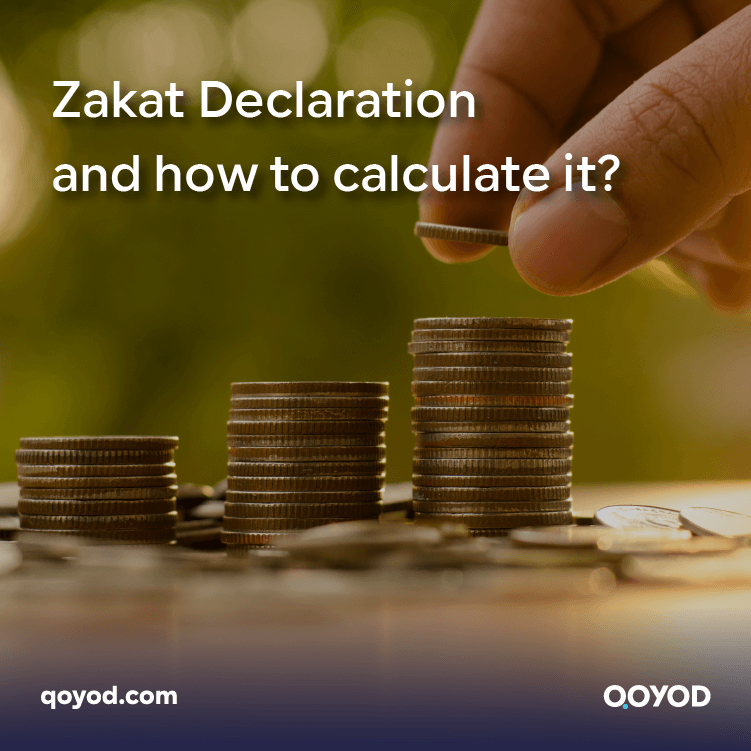In a world full of economic and social challenges, zakat is an essential foundation for building prosperous and interdependent societies, as it is an expression of the values of justice, solidarity, and compassion that the world so desperately needs in these difficult times. It is not just a religious duty; rather, it is the spirit of cooperation and collaboration that elevates us all to a higher level of generosity. When we talk about the Zakat Declaration, we talk about the power of moving money towards the poor and needy. It is both a complex and a delightful process, as financial assets become an effective means of achieving comprehensive development and positive change, and when calculated carefully, positive energy is created for the equitable distribution and sharing of wealth among all segments of society.
Steps to fill out the Zakat Declaration
When filling out the Zakat declaration, the following steps can be followed:
- Open the e-services website of the Zakat and Income Authority, then go to the main menu of the site.
- Look for the section of declarations or services related to Zakat; this section is called “Declarations” or “Zakat Services” or something similar.
- After accessing the Declarations section, choose “Submit Zakat Declaration” or any similar option that refers to submitting the Zakat declaration.
- Then you will see a list of available declarations. Choose the declaration you need that suits your financial situation and personal circumstances.
- You will then need to enter all your financial statements, such as annual income, assets, liabilities, debts, and any other relevant data.
- After entering the required data, click on the “Zakat Declaration” button or any similar button to confirm the submission of the declaration.
- After confirmation, you will receive an SMS on your mobile phone containing the bill number for the Zakat due.
- You may need to use this number to pay the amount due later.
- After paying the outstanding amount, you will be issued a certificate proving that the Zakat declaration has been submitted and the amount has been paid.
- You can save or print this certificate as proof of Zakat payment.
Who is subject to the provisions of Zakat?
Zakat is one of the means of achieving social justice and distributing wealth in society, subject to the provisions of Zakat for specific categories of individuals and institutions, including:
Saudi citizens and citizens of the Gulf Cooperation Council (GCC) States
Saudi citizens and residents of the Gulf Cooperation Council (GCC) in Saudi Arabia must pay the zakat if they possess wealth that exceeds the prescribed quorum.
Resident Companies
Companies residing in Saudi Arabia must pay Zakat on their profits if they meet the specified conditions. These conditions include, but are not limited to: the company must be registered on the financial market as “Tadawul” and make profits that exceed the prescribed quorum for Zakat.
Shares of non-Saudi partners in resident companies
Shareholders of shares in resident companies listed on the Tadawul Stock Exchange must pay Zakat on their shares if they meet the specified conditions.
Permanent Saudi-owned installations
Permanent establishments owned by Saudis and citizens of the Arab Gulf Council States who do not reside in the Kingdom must pay Zakat if certain specified conditions are met.
Examples
If the board of directors of the enterprise holds regular meetings in Saudi Arabia and makes the main decisions concerning the management of the company or the top executive decisions, or if the enterprise earns more than 50% of its income from Saudi Arabia,.
Zakat Calculation Method
Zakat is an Islamic obligation that requires rich Muslims to give part of their wealth for the benefit of the poor and needy. To calculate the amount due for zakat, there are two main methods:
Estimated method
The estimate is based on an assessment of the value of assets and property subject to zakat based on a specified percentage. In this method, Muslims determine the amount they wish to pay as zakat based on their personal appreciation of the value of their wealth, and the usual ratio in the estimation method is 2.5% of the wealth held.
Examples
If a person has an estimated wealth of $100,000, the amount due for zakat according to the discretionary method will be $2,500 ($100,000 × 2.5%).
Note
The estimation method is easy and flexible, as it allows Muslims to use their personal appreciation of the value of their wealth, yet the estimate must be realistic and fair to ensure proper adherence to the obligation of zakat.
Regular method
The regular method of zakat recognition is based on the identification of assets and property covered by zakat and the calculation of the amount due based on the specific regulations and instructions of the countries taxing zakat.
Laws and regulations vary between countries, and assets covered by zakat may include money, investment funds, real estate, shares, profits, wages, etc.
Examples
In the Kingdom of Saudi Arabia, the regular method of calculating Zakat is applied, and the rate is 2.5%, as companies and individuals who meet the regular conditions must pay Zakat according to the criteria specified in the tax regulations.
Note
The statutory method is based on specific standards and regulated by the competent authorities, ensuring uniform procedures and regular and fair implementation of Zakat.
Fine for late payment of Zakat
Failure to pay Zakat and income tax within the specified period and failure to comply with tax obligations can cause penalties and fines, and the following are some of the fines resulting from late payment of the Zakat declaration:
Late payment
A fine is imposed on the taxpayer who does not pay tax or zakat on time, and the value of the fine depends on a specific percentage of the amount due, and this percentage may vary according to the tax legislation in your country.
Failure to file a tax return
If you file an incorrect tax return or an estimated tax estimate that is lower than what is due, a fine may be imposed on the taxpayer.
Issuing a tax invoice from an unregistered person
In the event that the tax invoice is issued by a person who is not registered with the Tax Authority, a fine may be imposed on the taxpayer, and he must verify the correct registration of the persons who issue the tax invoices and ensure that they are registered with the competent authority.
Failure to keep tax invoices
The law sometimes requires the taxpayer to keep tax invoices for a specific period of time, and if the taxpayer does not keep the invoices and is punished in the case of a tax audit, a fine may be imposed on him.
Staff members of the Authority are denied access to their work.
If the tax authority’s officials obstruct access to the workplace or refuse to provide the information required for tax scrutiny, the tax authority shall be fined.
What is the e-Zakat Calculator?
It is an online tool used to help Muslims calculate the amount due for Zakat based on the assets and properties they own. It is an easy and convenient way to verify compliance with the obligation of Zakat and determine the amount due.
It usually contains forms filled with financial information about the individual or institution, such as the value of financial assets, real estate, wages, and profits. This information is used to calculate the amount due for Zakat based on the percentage determined according to the laws and regulations of Zakat in the country concerned.
What is the method of calculating Zakat using the Zakat Calculator?
The Zakat calculator available in the Zakat, Tax, and Customs portal is a useful tool for calculating Zakat in an easy way, and the following are the most important main points of the method of calculating Zakat using the Zakat calculator:
- Access to the Zakati website: You must first access the Zakati website, which can be accessed via the web browser.
- Select “e-Services”: You should choose “e-Services,” which is the section that provides many e-services related to Zakat.
- Select “Zakat Calculator”: Once you enter the e-services section, you must search for “Zakat Calculator” and click on it to access the calculator.
- Enter the required information: After accessing the Zakat calculator, you will find a list of different Zakat items, such as cash, land, money, and others.
- You must choose the items you own and enter the required information for each item, such as the value and the required Zakat nisab.
- Zakat Calculation: After entering the required information, you can click on the “Zakat Calculation” button to get the final result of the Zakat amount to be paid.
- The calculator will show the result immediately and clearly, allowing the user to understand the Zakat amount due according to the information entered.
Conclusion
In the end, we find that the Zakat Declaration goes beyond just numbers and financial equations, as it is an expression of a deeper human vision that carries with it a strong and inspiring message; it means that we have a responsibility to direct wealth and money towards the poor and needy.
It is also an opportunity for us to be active and engaged individuals in building a better future for all, to review ourselves and assess our ability to sacrifice and positively impact the lives of others, to calculate Zakat with care and dedication, to make it an opportunity for positive change and transformation, to be a symbol of justice, dignity, and compassion in our daily lives, and to inspire others with the power of Zakat and its ability to achieve good and progress.
The journey of Zakat Declaration is a diverse and inspiring journey that deserves to be undertaken with Qoyod for a better future for all, and it is worth mentioning that the program also offers all its customers: electronic invoice systems as well as POS systems, stores, customers, etc.And so on and so forth.
After you know what Zakat is and how to calculate it, try Qoyod now for free for 14 days and move towards a deeper understanding of the essence of Zakat and its true meaning with this wonderful program.




